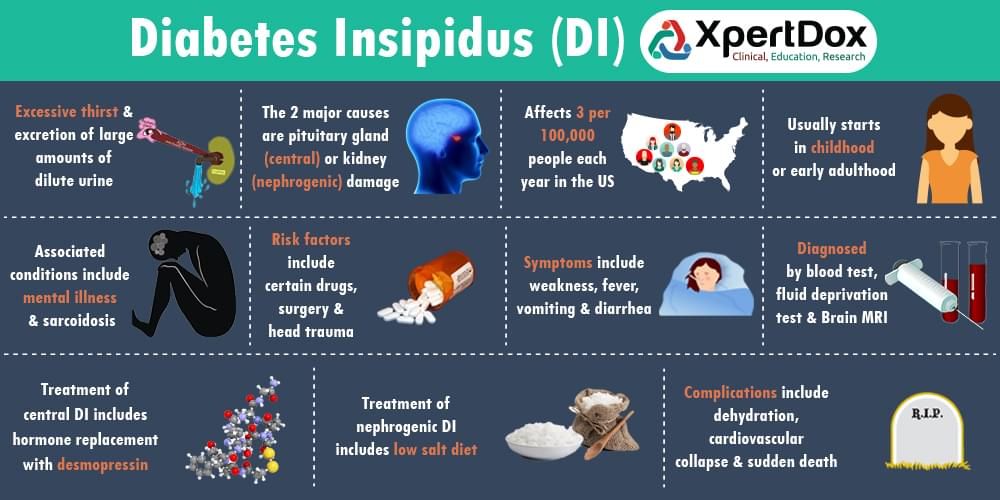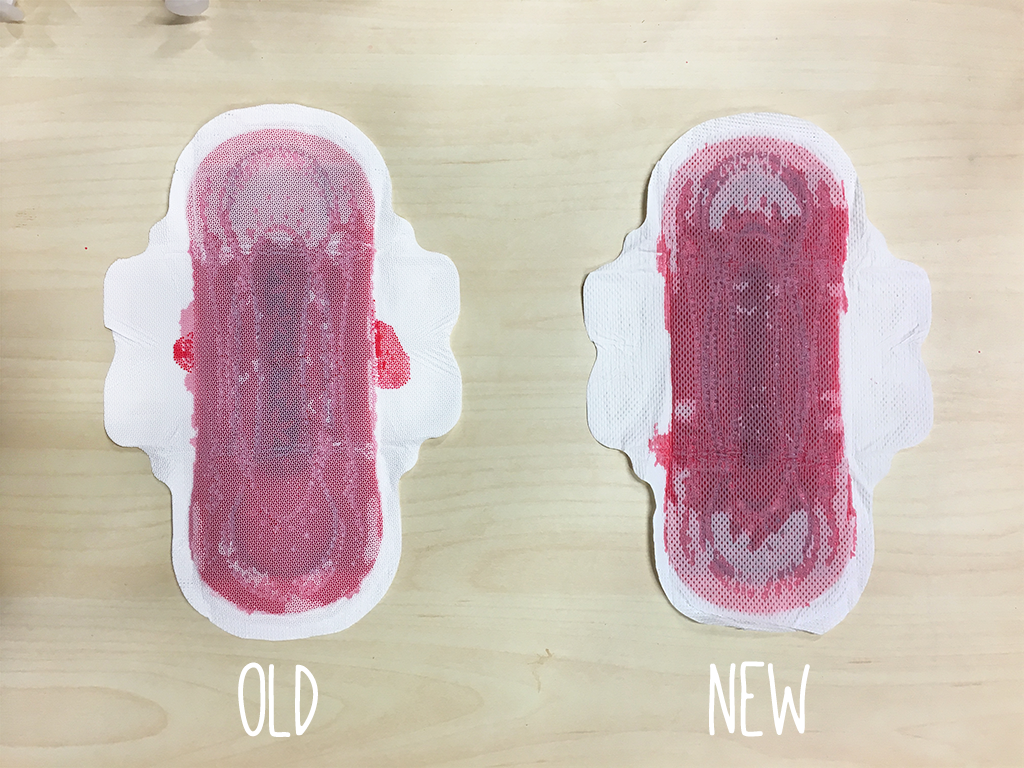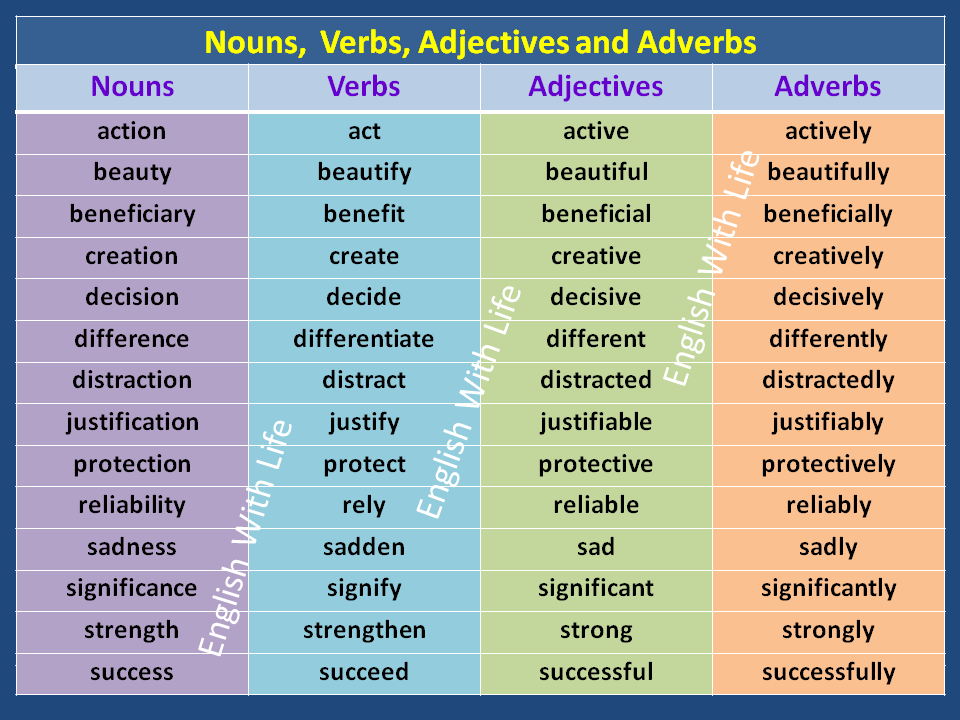How to deworm a 3 year old child
Home Remedies For Worms | Deworming Kids With Natural Medicines
Check out our list of natural deworming home remedies suggested by Ayurvedic consultant Dr Niveditha Srinivasamurthy to effectively get rid of worms in your child
Sujatha Das, mom of 7-year-old Saumen, is at a loss when her son gets up at night complaining of stomach aches and itching in his anal region. Close inspection reveals that he has intestinal worms. Before starting medicines for deworming, Sujatha decides to try out some natural remedies.
Worm infestations in kids are a common occurrence. Like Sujatha's son, many kids suffer from it.
Deworming in children
The process of removal of worms from the intestine with the aid of medication is known as deworming. Deworming is essential for kids as it helps in relieving the symptoms and discomfort caused by worm infestation.
What causes worm infestation in children?
Kids often come in contact with worm-infested toys, objects, or dust while playing, which can lead to worm infestation. They can also get it through close contact with other kids who have pinworms. Sharing clothes or other personal items with kids who have worms can also be the cause of infestation.
Sometimes, worm eggs get lodged in the fingernails of children. When they put their hands in their mouths, the eggs get transferred. Once ingested, they travel all the way to the small intestine where they hatch resulting, in a worm infestation.
The most common type of intestinal worm is threadworm or pinworm.
Diagnosing worms
Doctors use various methods to diagnose a worm infestation. Here are some of the diagnostic methods:
- Tape test: A clear tape is placed around the child's anus. This tape is then directly examined under the microscope to check for the presence of pinworms.
- Parasite stool test: Worms, larvae, and eggs can be identified by examination of the stool sample.
- Endoscopy: The small intestine is directly checked for the presence of parasites by inserting an optical fiber cable with a camera through the mouth and passing it through the esophagus and stomach.

- Colonoscopy: In this method, a fiber-optic cable with a camera is inserted via the rectum into the small intestine to inspect any parasites that are large enough to be visible.
- Blood tests: This test is performed to look for parasites that are present in the blood.
Tips to protect your kids from worms
|
Home remedies for worms in kids
There are many home remedies that are effective against worms in children. Here is a list of some home remedies that you can use to deworm your child naturally.
Here is a list of some home remedies that you can use to deworm your child naturally.
1. Turmeric
Turmeric or haldi is hailed as the most easily available antiseptic in any household. It is also effective in dealing with all kinds of intestinal worms.
How to have it
Give your kid a glass of buttermilk with one spoon of turmeric once every day. Continue this for a week or so to flush out the intestinal worms. Alternatively, you can do it by putting one spoon of turmeric into a glass of warm water.
2. Coconut oilThe anti-parasitic properties found in coconut and its oil make it an effective treatment for worm infestation. Both coconut and its oil are used to treat intestinal worms in children.
How to have it
Give one teaspoon of coconut oil to the child first thing in the morning for a week. It should be followed by a cup of warm water. Eating a tablespoon of grated coconut daily for a week or 10 days is also said to take care of the worm infestation problem in children.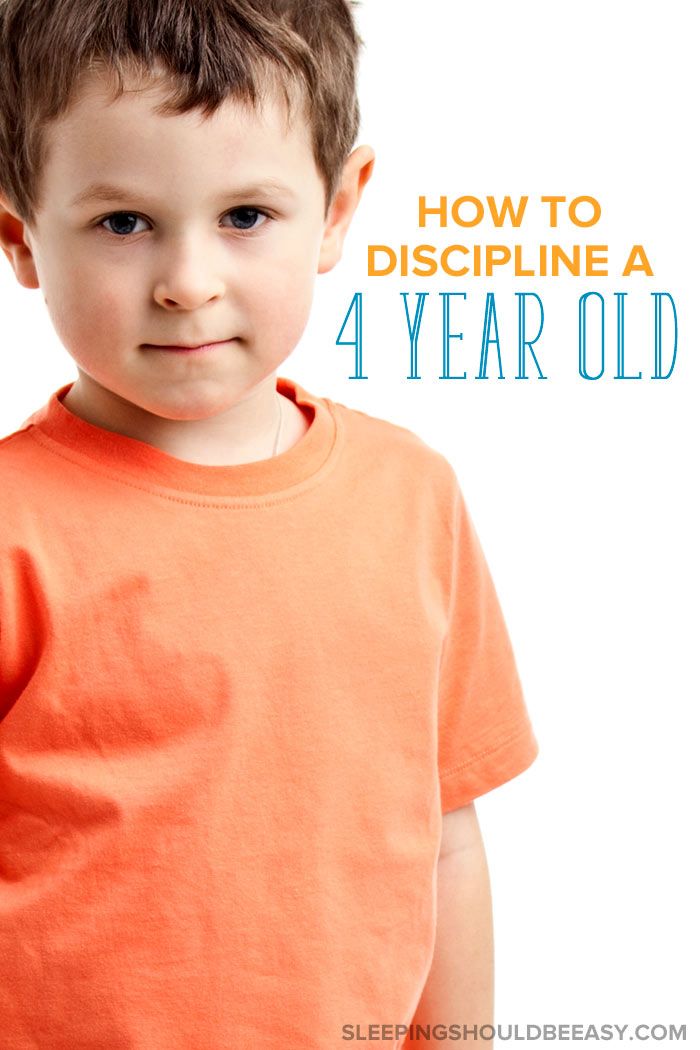
The triglycerides present in extra-virgin coconut oil help in removing the worms from the child's body. Coconut oil also boosts a child's immunity and prevents recurrence.
3. Bitter gourdTraditionally, bitter gourd and its juice are used to treat parasites in the tummy. Children should be encouraged to eat bitter gourd at least once a week as a preventive measure.
How to have it
Cut and soak the bitter gourd in water for an hour with salt and turmeric. This will reduce its bitterness. It can also be boiled along with a potato and salt. Then mash the bitter gourd with the potato and feed it to the child. Another effective way is to juice one bitter gourd and mix it with water and honey (honey should be given only to children above two years of age). The child suffering from worms should have it at least twice a day to get some relief.
4. NeemThe neem leaves are known to have strong anti-parasitical properties and can be used effectively in treating worm infestation.
How to have it
These days, dried neem flowers are available. These can be added to rasam, sambar, or any curries as tempering. Neem leaves can also be shallow fried in little oil or ghee. Sprinkle a pinch of salt or rock salt. Remove it when crisp. Try to feed these crisp leaves to your child with rice.
Dried neem powder can also be used to cure worm problems in children. Mix one teaspoon of the powder in warm milk and add some honey. Ask your kid to drink this, preferably on empty stomach for one week. You can continue to feed your child this drink until the worms are completely gone.
5. GarlicA pod of garlic is packed with many worm-fighting properties. Hailed as one of the best natural dewormers for kids, garlic can be safely used to kill parasites from the body without any side effects.
How to have it
Crush 2-3 garlic cloves, add it to one cup of milk, and bring it to a boil. Give it to your child to flush out the worms present in his tummy.
Give it to your child to flush out the worms present in his tummy.
Or, soak 2-3 cloves of raw garlic in honey and give one teaspoon of the infused honey to your child on an empty stomach.
6. Unripe papayaThe enzyme papain present in raw papaya is potent enough to destroy intestinal worms. Papaya seeds are also useful in expelling worms from the stomach.
How to have it
Grate firm raw papaya and mix it with warm milk along with one tablespoon of honey. Make your child drink this until he is free from worm infestation.
Ground papaya seeds mixed with warm milk or water also help in getting rid of worms. Get your child to drink it first thing in the morning, for three days in a row. You can also ask your child to gulp the seeds as a whole so that she does not taste the bitterness.
Tips to feed bitter food to your child
|
Here are some products to help your child get relief from pain, and for you to learn more about kids' health. Kids deworming syrups |
Frequently asked questions (FAQs) on worm infestation
1. What are the signs of worms in a child?
You may notice tiny thread-like worms on your child's undergarments or in the toilet after he uses the bathroom. Itching around the anus during the night is another sign.
2. Can babies get worms?
Yes. Your baby can come in contact with a worm-infested surface or item while crawling or playing outdoors. Also, an infected person with improper hygiene can pass on the worms to the baby during handling.
3. How often should I deworm my child?
It is essential to get rid of worms as these nasty parasites can affect your child's health and well-being. It is a good practice to deworm children every six months after the age of two. Repeat treatments are required as only the adult worms are eliminated but the eggs stay on the body leading to reinfection.
4. Why is it important to deworm children?
Worm infestation can cause children to fall sick resulting in loss of attendance in school. Also, their growth and performance are affected. Regular deworming helps to keep children in good health as well as stops the spread of infestation in the community.
Deworming Kids – Signs, Diagnosis & Home Remedies
Deworming is the first step to take as soon as you notice symptoms of intestinal worms in your kid. There are various ways to deworm your kid. However, the treatment differs, depending on the type of infestation your kid is suffering from. You may get rid of the intestinal worm through prescribed medicine for older kids or make use of syrup, in case of toddlers, as recommended by your doctor.
What Are Intestinal Worms?
Intestinal worms are parasitic worms such as tapeworms, roundworms, pinworms and hookworms, which can cause problems to humans once they begin infesting their body. They fester in the intestinal walls of humans and animals and lead to larger health issues if left untreated. Unhygienic and unsanitary surroundings and consumption of contaminated water or food are the common causes of intestinal worms infestation in the human body. There are a few symptoms which can be related to an infestation of these parasitic worms. Early diagnosis can help locate the type of worms your kid is infected with. Once the type of worm is identified, you can easily treat your kid with the help of deworming medication prescribed by your doctor.
Unhygienic and unsanitary surroundings and consumption of contaminated water or food are the common causes of intestinal worms infestation in the human body. There are a few symptoms which can be related to an infestation of these parasitic worms. Early diagnosis can help locate the type of worms your kid is infected with. Once the type of worm is identified, you can easily treat your kid with the help of deworming medication prescribed by your doctor.
What is Deworming?
Deworming is the process of expelling intestinal worms or parasitic worms from the body by administering an anthelmintic medicine/drug. In other words, it is a medicated process of getting rid of intestinal worms. The deworming process includes the use of anthelmintic medication.
How Do Kids Get Worms?
There are several causes of worms in children. Below, are some of the common ways through which kids can fall victim to parasitic worms:
- Water is the most common medium of getting an infection.
 Drinking contaminated water can invite infestation of worms in your kids.
Drinking contaminated water can invite infestation of worms in your kids. - Poor hygiene is another way these worms can travel into your body.
- Consumption of undercooked meat from an infected animal or undercooked fruits and vegetable infected with worms.
- Soil infested with worms is another culprit behind causing an infestation in your kid.
- Infected pets can also become the messenger of parasitic worms that easily travel from your pets to your kid.
- Lack of sanitation is one of the causes of parasitic worm, especially for those who do not wash their hands after using the toilet.
Parasitic worms or intestinal worms breed in an unhygienic environment. Usually, when your kids touch things such as worm-infested toys or play in the dirt, they end up getting worm eggs on their hand, which travel into their body when they touch their mouth or eat something directly without washing their hands.
Symptoms of Worms in Children
Below are a few symptoms that can help you identify whether your kid has fallen prey to intestinal worms or not:
- Abdominal pain
- Redness or rash on the buttocks
- Vomiting or diarrhoea
- Weight loss
- Appetite loss
- Anaemia can be related to parasitic worms
- Tiredness, weakness or hunger due to worms
- Blood in the stool
- Diarrhoea or constipation
- Urinating frequently
- Pain while urinating
Diagnosing Worms
If you are suspecting infestation of worms in your child based on any symptoms you may notice, then you should consult your doctor and get your child diagnosed without a second thought.
There are numerous ways of diagnosing worms in children, such as taking samples of stool to examine the presence of worms or taking a blood sample to examine the presence of antibodies that our body usually produces when attacked by parasites.
Here are some common methods of diagnosing worms in children:
1. Checking Fingernails
As your hands are the primary mode of transferring worms inside the body through ingestion, worms often leave their eggs under the fingernails. The doctor will examine the area under your child’s fingernails to determine the presence of worms.
2. Sticky Tape Test
This is a common exam to test for the presence of worms. The doctor sticks a piece of tape to the child’s bottom. The tape will collect any worm eggs if there are any. This is then removed and sent to the lab to test for worm eggs stuck to the tape.
3. Stool Examination
The stool can be examined to check for worms. If positive, it indicates that there are worms in the intestines.
4. Ultrasound
In case there the worm infestation is suspected to be severe, the doctor may conduct an ultrasound.
Dangers of Worm Infections
People with low immunity, especially children, are more susceptible to infestation of intestinal worms. There are various dangers of worm infection one should watch out for. Malnutrition, intestinal blockage, a hindrance to the healthy growth of children, weight loss and anaemia, are a few risks resulting from worm infections.
There are various dangers of worm infection one should watch out for. Malnutrition, intestinal blockage, a hindrance to the healthy growth of children, weight loss and anaemia, are a few risks resulting from worm infections.
Treatments
Treatment against parasitic worms depends on the type of worms and symptoms in your kid. Worms like tapeworms will die on their own if you follow a healthy diet and have a strong immune system. However, in most cases, you should consult your doctor and follow an anthelmintic treatment as prescribed by the doctor. Since parasitic worms lay eggs inside their host’s body and keep multiplying if left untreated for long, it makes it even more difficult and time-consuming to deworm.
Deworming Medicine for Kids
Deworming medicine for kids varies based on your kid’s age and the type of worms he is infected with.
- Treatment for tapeworms is dealt with using oral medication such as praziquantel (Biltricide). This medicine paralyses and dissolves the tapeworm, which is later on passed through stool.

- Infection by roundworm is treated using mebendazole (Vermox, Emverm) and albendazole (Albenza). Results of effective treatment become visible after a few weeks, and it is recommended to visit your doctor for another diagnosis after the completion of treatment to make sure that deworming is done thoroughly.
Home Remedies for Deworming
- Make sure you set a nutritious, balanced diet for your kid, including fruits and vegetables every day.
- Ginger, garlic should be included in the diet.
- Unhygienic food and water, especially from outside, should be avoided.
How to Prevent Your Kids From Getting Worms?
Prevention is always better than treatment. There are several ways through which your kid can get infected by intestinal worms such as playing in infested dirt, grass, and sand, consuming food from unhygienic places or by coming in contact with people who are already infested with worms. Below are a few points of prevention against worms:
- Make sure that your kids wash their hands properly with soap before consuming anything.

- Wash fruits or vegetables properly before eating, and also make sure that whatever you consume is not infested with worms.
- Prevent your kids from playing barefoot in mud, sand, grass or other outdoor places.
- Prevent your kids from eating uncooked meat, especially pork and fish, which are known to carry worms in them.
- Make sure that any swimming pool your child visits is in line with hygienic standards.
- Avoid drinking water from public places. Always drink purified water.
FAQs
1. How Frequently Should I Deworm My Child?
As per WHO’s recommendation, deworming once every six months is enough.
2. What Do Worms in Kids Look Like?
Threadworms, also known as pinworms in kids, is the most common type of worms and seem similar to pieces of white thread.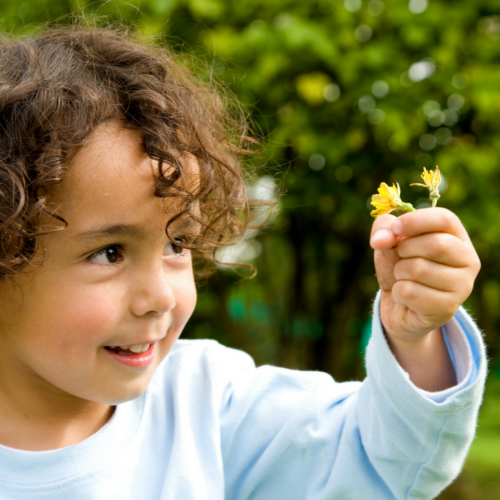
3. What Are the Side Effects Of Deworming Children?
Usually, deworming medicines are mild enough to be easily tolerated by kids, but in some rare cases, there may be light side-effects of deworming, such as nausea, mild headache, and vomiting.
4. Can Babies Get Worms?
Yes. if a child is consuming raw food contaminated with the eggs of worms, he is susceptible to intestinal worms.
5. Is There a Particular Age for Deworming?
The recommendation is to deworm all kids from age 6 months to 5 years of age.
Deworming is something every parent should follow as a precaution, as kids often play in mud and dirt outdoors, so it is likely they may come in contact with worm eggs. As we all know, prevention is the best treatment, and necessary steps should be taken to prevent your kids from coming in contact with these parasites, as much as possible, as well as following a proper deworming routine every six months.
Treatment of animals from worms - round-the-clock veterinary clinic "Doctor Vet" in the Leninsky district of Saratov
For prevention, it is necessary to deworm animals from one to two times a year, up to once every 4 months, depending on the situation. At a high risk of infection - eating raw offal or meat, fish, eating garbage or feces on the street - deworming can be done once a quarter.
At a high risk of infection - eating raw offal or meat, fish, eating garbage or feces on the street - deworming can be done once a quarter.
For prevention, deworming of animals is necessary from one to two times a year, up to once every 4 months, depending on the situation. At a high risk of infection - eating raw offal or meat, fish, eating garbage or feces on the street - deworming can be done once a quarter.
Deworming is also necessary before vaccination if the last prophylactic deworming was more than 4-6 months ago. Animals should be vaccinated no earlier than 10-14 days after the worms are run. Please note that you need to give the anthelmintic twice with a period of 10-14 days. A single dose destroys only the adult form of the worms, but not the eggs. For 10-12 days, new worms are removed from the eggs, and by repeated intake you will destroy them. If even after the second dose of the drug the animal shows signs of worming, be sure to contact your veterinarian, he may advise you to change the drug or conduct additional studies. It is useless and dangerous to vaccinate an animal with helminthic invasion.
It is useless and dangerous to vaccinate an animal with helminthic invasion.
Praziquantel, cestal, drontal plus and others are suitable as anthelmintics. Please note that these drugs must be given strictly according to the weight of the animal, so the animal must be weighed before giving the drug! Read the instructions carefully and follow the dose strictly!
If you suspect that an animal has worms - don't guess and don't waste time - a stool test can be taken at any veterinary clinic that has a laboratory, or at the laboratory itself. It is necessary to do this, but a single negative answer does not exclude the presence of helminths.
If the animal is really unlucky, parasites can be eliminated by using the following drugs twice: praziquantel, cestal, drontal plus, prazicide, caniquantel - pay attention to which animals the drug is intended for, this is important. But there is no need to determine what type of worms your animal has. After all, for example, modern preparations for cats are designed for all types of worms that parasitize in the cat's body (similarly for dogs). Once again, we draw your attention to the fact that the drugs are given strictly by weight.
Once again, we draw your attention to the fact that the drugs are given strictly by weight.
In cases where the animal has a very strong helminthic invasion (this happens especially often in cases where a kitten or puppy is picked up on the street), the animal has worms visible to the naked eye in the feces, the animal vomits with worms, it is necessary to give preparations for worms under the supervision of a physician. Since the rapid death of helminths will lead to severe intoxication. It is possible that there will be a need for infusion support (dropper). An animal may have a concomitant viral infection, which will also require the attention of a veterinarian.
During pregnancy and lactation, anthelmintics should not be given, as this may adversely affect the health of the pups. If you are concerned about the health of the animal, it is better to drive away the worms 10-14 days before the planned mating. If you did not drive out the mothers of worms before mating, the cubs need to drive out the worms no earlier than 21 days after birth.
Worms are very easily transmitted to humans if the rules of hygiene are not followed, therefore, until your animal is free from worms, you must strictly observe the rules of personal hygiene, do not allow the animal to “kiss” you and limit the contact of the animal with small children. If you are worried, you can consult a pediatrician and decide whether to give a prophylactic anthelmintic to a child, or limit yourself to personal hygiene.
We would especially like to draw your attention to the fact that some of the symptoms taken by the owners for helminthic invasion may be a sign of not helminthic invasion at all, but more unpleasant diseases. Therefore, if your animal shows alarming symptoms, do not self-medicate, but contact your veterinarian.
Features of therapy for parasitic invasions in children | #10/13
A parasitic disease is the development of painful symptoms as a result of the vital activity of a helminth or protozoa in the human body [1]. The main factor in the survival and spread of parasites is their unusually high reproductive capacity, as well as constantly improving mechanisms of adaptation to living in the human body. Unfortunately, the alertness of medical workers regarding parasitic diseases in the population is currently extremely low, and the prevention of helminthiasis is reduced to the treatment of identified infested patients [12, 13]. At the same time, many researchers note the connection between the prevalence of parasitosis in the child population and the development of functional pathology of the digestive organs against the background of dysregulation and a high risk of developing chronic diseases even if the child is naturally sanitized over time.
The main factor in the survival and spread of parasites is their unusually high reproductive capacity, as well as constantly improving mechanisms of adaptation to living in the human body. Unfortunately, the alertness of medical workers regarding parasitic diseases in the population is currently extremely low, and the prevention of helminthiasis is reduced to the treatment of identified infested patients [12, 13]. At the same time, many researchers note the connection between the prevalence of parasitosis in the child population and the development of functional pathology of the digestive organs against the background of dysregulation and a high risk of developing chronic diseases even if the child is naturally sanitized over time.
The most common and studied diseases - ascariasis, enterobiasis (Fig. 1) and giardiasis - are recorded everywhere. In Russia, more than 2 million patients with nematodes are detected annually. When assessing the territorial distribution of giardiasis in Russia, it was found that the highest average level of incidence rates for many years was noted in St. Petersburg, and the incidence of children attending children's institutions is 35% [2].
Petersburg, and the incidence of children attending children's institutions is 35% [2].
Each person during his life repeatedly suffers various parasitic diseases [9].]. In childhood, parasitic infections are more common. In young children (up to 5 years of age), this is facilitated by the widespread prevalence of the reproductive material of parasites (cysts, eggs, larvae (Fig. 2)) in the environment and insufficient development of hygiene skills.
The periods of transient weakening of the immune defense of the mucous membranes of the digestive tract are also important. The peaks of detected parasitic diseases in children are observed at the age of 2–3 years, at 4–7 years, at 10–14 years. In the structure of morbidity, the share of young children and schoolchildren reaches 95% among all registered patients with enterobiasis and 65% among patients with ascariasis [1].
These periods of a child's life are characterized by the intensity of adaptation processes and a decrease in protection reserves, along with the intense influence of the environment. Comparison of the significance of the criteria that determine the features of the selected age intervals (mass-growth “jumps”, critical periods of the development of the immune system, peaks of primary morbidity) makes it possible, first of all, to identify the metabolic level that increases at this time in the child’s body, aimed at ensuring mass-growth spurt. This condition is beneficial for parasites, since the main task of their life activity is the production of a huge amount of reproductive material (eggs, cysts), which also primarily requires a very high intensity of metabolic processes. For example, with giardiasis, up to 12 million cysts are excreted in 1 g of the faeces of a sick person [4, 8].
Comparison of the significance of the criteria that determine the features of the selected age intervals (mass-growth “jumps”, critical periods of the development of the immune system, peaks of primary morbidity) makes it possible, first of all, to identify the metabolic level that increases at this time in the child’s body, aimed at ensuring mass-growth spurt. This condition is beneficial for parasites, since the main task of their life activity is the production of a huge amount of reproductive material (eggs, cysts), which also primarily requires a very high intensity of metabolic processes. For example, with giardiasis, up to 12 million cysts are excreted in 1 g of the faeces of a sick person [4, 8].
The importance of certain risk factors varies according to the age of the child. It has been proven that sanitary and hygienic living conditions are more important for young children, and for adolescents, when collecting an anamnesis, attention should be paid to socio-economic and geographical factors (staying in a camp, a tourist trip, having a younger brother or sister) (Fig. 3).
3).
A transient decrease in anti-infective immunity as a risk factor for the occurrence of parasitosis in children is also recorded during the period of convalescence after viral diseases caused by viruses of the herpes group (cytomegalovirus, herpes simplex virus I and II, Epstein-Barr virus), may occur as a result of iatrogenesis (the use of immunosuppressive therapy in allergic and autoimmune diseases). Currently, a significant proportion of children are in a state of maladjustment, which is also accompanied by a decrease in immune defense.
The immune defense of the gastrointestinal tract (GIT) of a child can be divided into specific and non-specific. Nonspecific protection includes a complex of conditions for normal digestion: the maturity of enzymatic systems, the provision of an acid-base gradient in various parts of the gastrointestinal tract, the activity of normal microflora, and adequate motor skills.
In some cases, violation of non-specific protection is possible. For example, the maturity of enzyme systems depends on the biological age of the child, which does not always coincide with the passport. Often this so-called delayed enzymatic start phenomenon is included in the phenotype of a child with diffuse connective tissue dysplasia. This phenotype may also include the following specific features: anomalies in the development of the auricle, "Gothic" palate, epicanthus, hypertelorism, joint hypermobility syndrome, minor anomalies in the development of the heart, gallbladder, etc. The functional deficiency of enzyme systems existing in such a child is combined with a change in elasticity and strength of the gastrointestinal tract wall, forming a predisposition to the occurrence of functional disorders of the digestive system. Studies have shown that in children with more than 5 of the above minor developmental anomalies, parasitic invasions are noted in 78% of cases, while in the control group, the incidence of parasitosis was less than 45% [3, 6].
For example, the maturity of enzyme systems depends on the biological age of the child, which does not always coincide with the passport. Often this so-called delayed enzymatic start phenomenon is included in the phenotype of a child with diffuse connective tissue dysplasia. This phenotype may also include the following specific features: anomalies in the development of the auricle, "Gothic" palate, epicanthus, hypertelorism, joint hypermobility syndrome, minor anomalies in the development of the heart, gallbladder, etc. The functional deficiency of enzyme systems existing in such a child is combined with a change in elasticity and strength of the gastrointestinal tract wall, forming a predisposition to the occurrence of functional disorders of the digestive system. Studies have shown that in children with more than 5 of the above minor developmental anomalies, parasitic invasions are noted in 78% of cases, while in the control group, the incidence of parasitosis was less than 45% [3, 6].
Separately, it should be noted that for a disease such as giardiasis, a predisposing factor for invasion is irregular and insufficient bile secretion into the intestine with anomalies in the development of the gallbladder (constrictions, kinks). Giardiasis, diagnosed in patients of the pediatric department of MONIKI, was accompanied by dysfunction of the biliary tract in 100% of cases.
In children in the recovery period after acute intestinal infections, after massive antibiotic therapy, as well as in patients with chronic pathology of the digestive organs, concomitant violations of enzyme supply, normal flora and intestinal motility also make the gastrointestinal tract more vulnerable to parasites (Fig. 4).
The specific protection of the mucous membrane of the digestive organs depends on the age of the child and his maturity. The mechanism of specific immune defense is one of the most ancient systems of the body, since helminthiases have accompanied mankind for many millennia.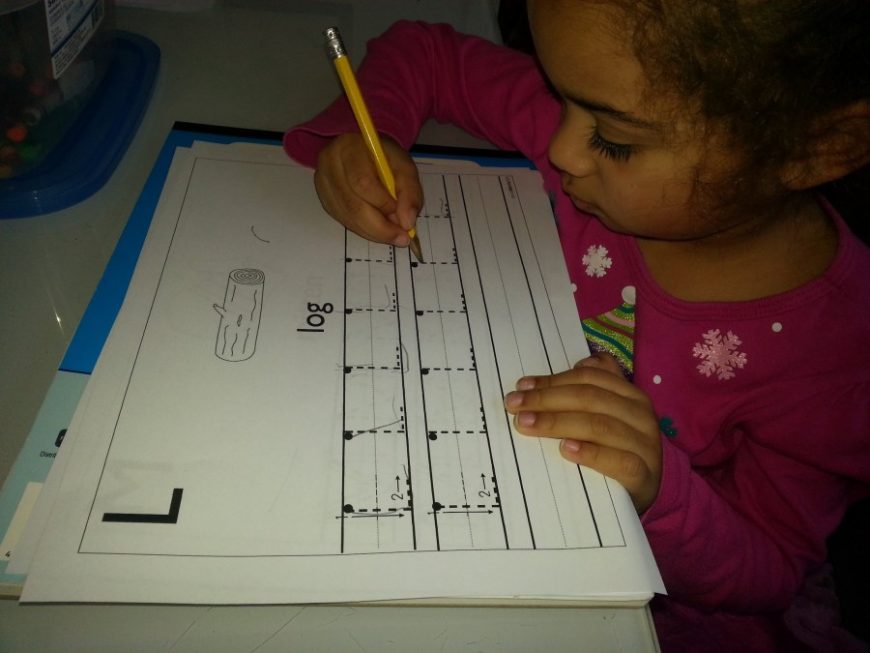 This mechanism is primarily represented by blood eosinophils and immunoglobulin E.
This mechanism is primarily represented by blood eosinophils and immunoglobulin E.
The classic extended antiparasitic response can be formed in a child no earlier than the age of 4 years and is closely related to the quality and quantity of IgE that matures by this age. Upon contact of the body with the parasite, inflammatory mediators are primarily released: interleukin, leukotriene C4, D4, prostaglandins, thromboxanes. The number of lymphocytes producing IgM and IgG increases. In a clinical blood test, an increase in the level of eosinophils and basophils is noted, associated with an increase in the content of these cells in the tissues of the invaded organ. Meeting with parasite larvae, tissue basophils secrete heparin and histamine, which, in combination with leukotrienes and other inflammatory mediators, cause general manifestations: itching, reactive edema, hyperemia, and can also provoke general manifestations: bronchospasm, manifestations of urticaria or diarrhea. Allergic inflammation in parasitoses develops along the classical path and is designed to create conditions leading to the death and/or elimination of the parasite [5].
At the same time, eosinophils have a pronounced cytotoxic potential that exceeds the capabilities of other blood cells, which explains the paramount importance of eosinophils in antiparasitic reactions and their damaging role in allergies. The main action of eosinophils is in barrier tissues. In the focus of invasion, they degranulate, providing helminthic and cytotoxic effects. Proteins of eosinophilic granules (large basic protein, eosinophilic peroxidase, eosinophilic cationic protein, eosinophil-derived neurotoxin) are toxic not only for the parasite, but also for the cells of the child's body. Another important cause of systemic and organ damage associated with parasitosis is the formation of immune complexes [9, ten].
The action of parasites on the child's body is carried out with the involvement of many systems. Almost all of their species can cause a shift in the ratio of Th2/Th3 cells in a direction favorable for their survival. Cases have been described in which parasite excretion products had a hormone-like effect on the host organism [5].
Parasites exert a local effect by causing contact inflammation of the mucous membrane and stimulating vegetative reactions. At the same time, the processes of intestinal absorption, adequate motility of the gastrointestinal tract and its microbiocenosis are disturbed.
The systemic influence is due to the use of the energy and plastic potential of food by the parasite to the detriment of the child's body, the induction of allergies and autoimmune processes, targeted immunosuppression and endogenous intoxication. Studies have shown that allergic syndrome accompanies ascariasis and enterobiasis in 71.3% of cases. Among children with atopic dermatitis, parasitosis is detected in 69.1%, while giardiasis accounts for 78.5% of all invasions [4].
A particularly recognizable clinical picture is formed by toxocariasis (Fig. 5). Clinical markers of this invasion are the leukemoid reaction of eosinophils (from 20% or more of eosinophils in the blood formula), which accompanies a bright and persistent allergic syndrome in the form of atopic dermatitis with severe itching and resistance to traditional therapy or severe bronchial asthma with frequent attacks.
In 75.3% of cases, parasitosis is accompanied by a variety of functional disorders of the gastrointestinal tract. A number of studies have shown that parasitic invasion can cause disturbances in carbohydrate metabolism, as well as disaccharidase deficiency due to a decrease in lactase levels [7, 9].
Parasitic invasions, as a rule, are accompanied by neurotic reactions of varying severity, in particular, Giardia is not without reason called "parasites of melancholy and sadness."
In most children, adaptation disorders are one of the important links in the pathogenetic process in parasitosis. It should be noted that the state of disadaptation primarily affects the lymphocytic link of immunogenesis, which cannot but affect the maturation and differentiation of specific immunity.
Diagnosis of parasitosis
Until now, a simple, affordable and reliable method for diagnosing parasitosis has been sought. The developed methods of direct visual detection require minimal exposure of diagnostic material, multiple repeated studies. Known methods for diagnosing helminthic invasions and protozooses, such as the Kato thick fecal smear method, the formalin-ether precipitation method, perianal scraping, microscopy of cystic and hepatic bile, have a number of disadvantages associated both with the developmental features of the parasite and with the state of the macroorganism and its reactivity.
Known methods for diagnosing helminthic invasions and protozooses, such as the Kato thick fecal smear method, the formalin-ether precipitation method, perianal scraping, microscopy of cystic and hepatic bile, have a number of disadvantages associated both with the developmental features of the parasite and with the state of the macroorganism and its reactivity.
However, the effort expended may be useless if the study is carried out during a pause in the production of cysts or eggs. For example, the non-informative value of perianal scraping with a 1-2-fold examination method is due to the frequency of oviposition by pinworm females. The peculiarity of the release of cysts by Giardia is called the "phenomenon of intermittent cyst release", in which the phases of massive release of cysts are replaced by a negative phase, which can last from 2-3 days to 2-3 weeks. During this period, it is impossible to detect Giardia in the feces.
Indirect research methods (determination of specific antibodies) have insufficient specificity and reliability. It is known, for example, that helminths change their antigenic composition as they go through a complex cycle of development from egg to adulthood. Antibodies in the host organism are produced mainly in response to the intake of helminth excretions and secretions, while somatic antibodies are used in immunodiagnostic reactions. The emerging nonspecific sensitization of the body, the commonality of some antigens of trematodes, protozoa and humans create a high proportion of false positive serological reactions in titers below reliably diagnostic ones. Thus, the study by enzyme immunoassay (ELISA) for helminths is a highly sensitive, but low specific method. Determination of parasites by polymerase chain reaction (PCR) is a highly specific and highly sensitive method, but due to the high cost and complexity, it cannot be screening when, for example, a group of children from a children's institution needs to be examined.
It is known, for example, that helminths change their antigenic composition as they go through a complex cycle of development from egg to adulthood. Antibodies in the host organism are produced mainly in response to the intake of helminth excretions and secretions, while somatic antibodies are used in immunodiagnostic reactions. The emerging nonspecific sensitization of the body, the commonality of some antigens of trematodes, protozoa and humans create a high proportion of false positive serological reactions in titers below reliably diagnostic ones. Thus, the study by enzyme immunoassay (ELISA) for helminths is a highly sensitive, but low specific method. Determination of parasites by polymerase chain reaction (PCR) is a highly specific and highly sensitive method, but due to the high cost and complexity, it cannot be screening when, for example, a group of children from a children's institution needs to be examined.
The clinical examination of the child and the careful consideration of indirect signs of parasitosis do not lose their relevance. It is important to note the possibility of the course of parasitosis in allergic and asthenic syndrome, polylymphadenopathy of unknown origin, in violation of intestinal absorption, carbohydrate metabolism, with a protracted and chronic course of diseases of the digestive tract, hepatosplenomegaly of unknown origin. The course of parasitic invasion has clinical features: usually, the signs of damage are minimized, the disease is erased, exacerbations are polymorphic and mild. A feature of exacerbations of diseases of this group is their cyclicity with a period of 11-15 days.
It is important to note the possibility of the course of parasitosis in allergic and asthenic syndrome, polylymphadenopathy of unknown origin, in violation of intestinal absorption, carbohydrate metabolism, with a protracted and chronic course of diseases of the digestive tract, hepatosplenomegaly of unknown origin. The course of parasitic invasion has clinical features: usually, the signs of damage are minimized, the disease is erased, exacerbations are polymorphic and mild. A feature of exacerbations of diseases of this group is their cyclicity with a period of 11-15 days.
Indirect laboratory signs of parasitosis can be anemia, basophilia, eosinophilia, an increase in the level of aspartate aminotransferase (AST).
In addition, signs of a possible parasitic invasion should be taken into account when evaluating the results of an instrumental study. Ultrasound examination of the abdominal organs in a child over 3 years of age indirect signs of parasitosis are hepatosplenomegaly, irregularity of the parenchyma of the liver and spleen due to small hyperechoic signals, enlarged lymph nodes in the hilum of the spleen.
Parasitic invasion determines the appearance and complaints of the child. Usually this is an emotionally labile and anxious child with dry, pale skin, with signs of impaired regeneration of the skin and mucous membranes, with polylymphadenopathy, adenoid vegetations of II–III degree, “jamming” in the corners of the mouth, “geographical” tongue, with reduced or selective appetite, often with unstable stools. There are also various manifestations of the allergic syndrome in the form of recurrent urticaria, persistent atopic dermatitis or broncho-obstructive syndrome.
Treatment of helminthiases
Treatment of helminthiases should begin with the use of specific anthelmintic drugs. The modern arsenal of drugs used to treat intestinal parasitosis includes a significant number of drugs of various chemical classes [11]. They are used both in clinical practice for the treatment of identified patients, and for the purpose of mass prevention.
When determining the drug for specific antiparasitic therapy, it should be understood that the spectrum of action of these drugs is not particularly wide. Almost all drugs of this group have been used for many decades, and it is reasonable to assume that the parasites have developed adaptation systems and the disease may be resistant to the therapy. According to G. V. Kadochnikova (2004), the effectiveness of such a traditional drug as Decaris does not reach 57% under modern conditions. In addition, this group of antiparasitic drugs, unfortunately, has a number of side effects: nausea, vomiting, abdominal syndrome.
Almost all drugs of this group have been used for many decades, and it is reasonable to assume that the parasites have developed adaptation systems and the disease may be resistant to the therapy. According to G. V. Kadochnikova (2004), the effectiveness of such a traditional drug as Decaris does not reach 57% under modern conditions. In addition, this group of antiparasitic drugs, unfortunately, has a number of side effects: nausea, vomiting, abdominal syndrome.
Thus, in modern conditions, preference should be given to more modern drugs, which, firstly, are universal for the treatment of both nematodosis and mixed helminthic invasions and are active against such a common parasite as Giardia. Secondly, the use of a single antiparasitic drug, rather than a combination of them, significantly reduces the risk of unpleasant side effects. To date, the only representative of this group in our country is albendazole (Nemozol).
For the treatment of ascariasis in older children or with recurrence of the disease, a combination of anthelmintic agents (for example, albendazole for three days, then Vermox for three days) can be used under the supervision of a physician. An indispensable condition for successful deworming of patients with enterobiasis is the simultaneous treatment of all family members (team) and strict adherence to the hygienic regimen to exclude reinvasion. It should be noted that daily wet cleaning is important, since casuistic cases of the spread of the reproductive material of pinworms on dust particles to a height of up to 1.5 meters have been described.
An indispensable condition for successful deworming of patients with enterobiasis is the simultaneous treatment of all family members (team) and strict adherence to the hygienic regimen to exclude reinvasion. It should be noted that daily wet cleaning is important, since casuistic cases of the spread of the reproductive material of pinworms on dust particles to a height of up to 1.5 meters have been described.
Treatment of giardiasis involves a mandatory diet with a restriction of the consumption of easily digestible carbohydrates, an increase in the proportion of protein in food, the use of "acidifying" foods (decoctions of lingonberries, cranberries), the use of choleretic decoctions and drugs.
The MONIKI pediatric clinic has developed principles for the treatment of parasitosis, taking into account the peculiarities of the pathogenesis of invasion and allowing for a qualitative and reliable treatment of this group of diseases. Thanks to the use of the developed scheme of therapy, it is possible to effectively prevent reinvasion and the development of functional disorders of the digestive system in children.
Principles of therapy for patients with parasitosis
1. Taking antiparasitic drugs is carried out taking into account the type of causative agent of invasion.
Drugs used in the treatment of ascariasis:
- Vermox (mebendazole) (for children from 2 years old) - 100 mg 2 times a day for 3 days;
- Pirantel - 10 mg / kg once;
- Nemozol (albendazole) (for children from 2 years old) - 400 mg once.
Drugs used in the treatment of enterobiasis:
- Vermox (mebendazole) (for children from 2 years old) - 100 mg once;
- Pirantel - 10 mg / kg once;
- Nemozol (albendazole) (for children from 2 years old) - 400 mg once.
Drugs used in the treatment of giardiasis:
- ornidazole 25-30 mg / kg (if body weight is more than 35 kg - 1000 mg) in two doses for 5 days, 1 day - 1/2 dose, repeated course after 7 days;
- Macmirror (nifuratel) - 15 mg / kg 2 times a day for 7 days;
- Nemozol (albendazole) - 15 mg / kg once for 5-7 days.

2. The treatment of parasitosis provides for changes in the properties of the child's digestive tract as a result of the vital activity of parasites (functional disorders of the digestive tract, fermentopathy, changes in microbiocenosis) and their correction with courses of enzyme preparations and synbiotics (Table 1).
3. Mandatory use of enterosorbents and a complex of multivitamins with microelements (Tables 2 and 3).
Thus, the principles of complex therapy of parasitosis in children, developed in the MONIKI pediatric clinic, provide for a gradual restoration of the functional state of the gastrointestinal tract, impaired as a result of local and systemic influence of parasites. The use of complex therapy makes it possible to prevent the further development of functional disorders with the formation of organic pathology, as well as to avoid reinvasion.
Literature
- Avdyukhina T.
 I., Konstantinova T. N. et al. Enterobiosis. Clinic, diagnosis, treatment, epidemiology, prevention: Proc. guide for doctors. M., 2003. 56 p.
I., Konstantinova T. N. et al. Enterobiosis. Clinic, diagnosis, treatment, epidemiology, prevention: Proc. guide for doctors. M., 2003. 56 p. - Blagova NN Some factors of immunity in patients with ascariasis and enterobiasis during treatment with albendazole: Abstract of the thesis. dis. … cand. honey. Sciences. St. Petersburg, 1997. 24 p.
- Human helminthiases / Edited by prof. V. I. Luchsheva, MD V. V. Lebedeva; guide for doctors. Krasnodar. Soviet Kuban, 1998; 124.
- Akhmetova RA, Tupertseva GT et al. Diagnosis, treatment and prevention of giardia infestation in children with chronic diseases of the digestive system: method. recommendations. Ufa: Publishing house of BSMU, 2008. 48 p.
- Izachik Yu. A., Izachik NA Immunology of the gastrointestinal tract in normal and pathological conditions. In: Immunology and immunopathology of childhood / DV Stefani, Yu. E. Veltishchev. M.: Medicine, 1996.
 S. 327–351.
S. 327–351. - Kadochnikova GV Ascariasis in children, improvement of diagnosis and treatment. Abstract cand. diss. Perm, 2004.
- Kopanev Yu. A., Sokolov A. L. Dysbacteriosis in children. Moscow: OAO Publishing House Medicine, 2008. 128 p.
- Korovina N. A., Zakharova I. N. et al. Diagnosis and treatment of giardiasis in children. A guide for doctors. M., 2006. 52 p.
- Lysenko A. Ya., Vladimova M. G., Kondrashin A. V., Maiori J. Clinical parasitology. Under the general editorship. Lysenko A. Ya. Management. Geneva, WHO: 2002. 752 p.
- Markin AV Prevention of the most important helminthiases in Russia // Zh. microbiol. 1995. No. 1. S. 106–108.
- Ozeretskovskaya N. N., Zalnova N. S., Tumolskaya N. I. Clinical and treatment of helminthiases. L., Medicine, 1985.
- Prevention of parasitic diseases on the territory of the Russian Federation; Sanitary rules and regulations.





